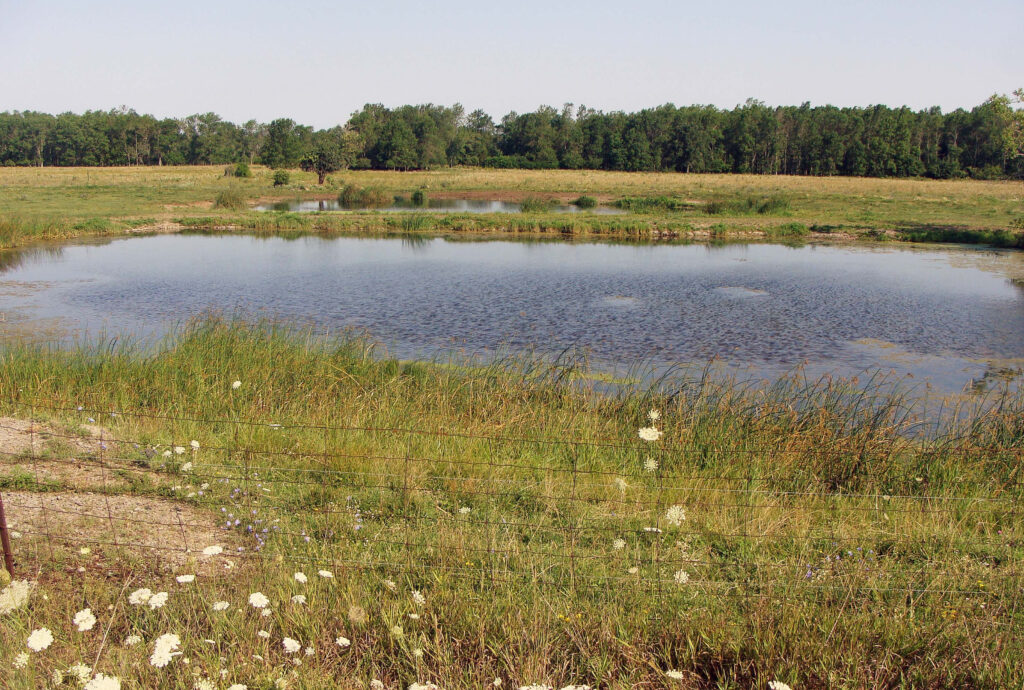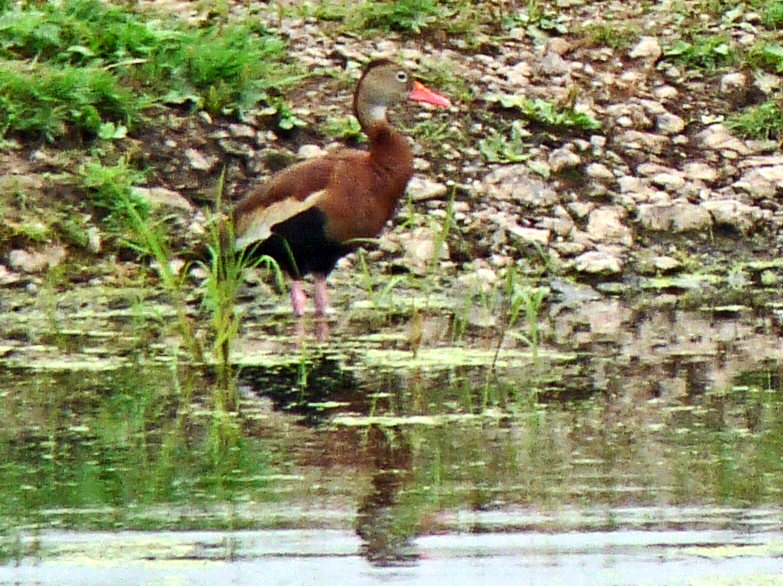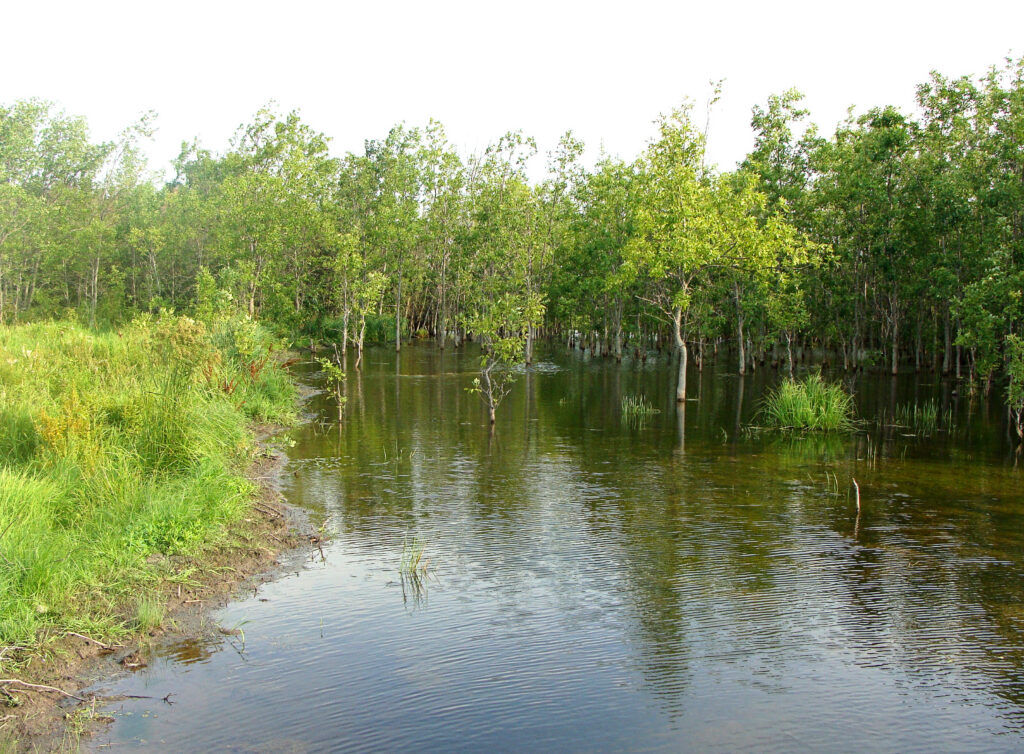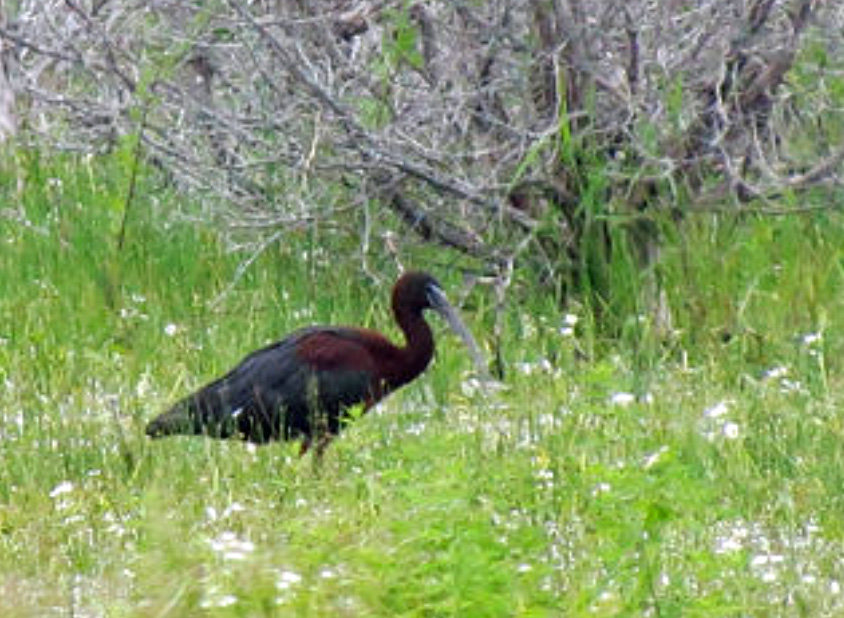Prince Edward County, Ontario, Canada
Roadside Ponds, Wetlands, and Other Nooks and Crannies
The idea for this month`s places to bird came from an experience at a little insignificant pond south of Milford about 14 years ago. It is a combination of two small ponds – farm ponds they appear to be, likely spring fed as there dosn`t seem to be a source from anywhere else. Both are separated by a berm. During spring, birders slow up when they pass this pond, give it a quick glance, just in case, then carry on. If one is lucky, they may see a family of Mallards, or a Killdeer running erratically around its edges. If these are the highlights in spring, then why would anyone stop in July or August?

But, someone did, in early July of that year. His name was David Okines and he was the head bird bander at the Prince Edward Point Bird Observatory, and he was just out for a day of casual birding.
On this day, July 13th, he was doing a survey of species at risk within the South Shore Important Bird Area. He, too, seldom stops at this pond which causes most birders to yawn, but he thought he`d take a look anyway, even though it was sort of out of the designated area in which he was surveying. He certainly didn`t expect to find an out of towner in amongst the vegetation and a family of Mallards.
What he found was a Black-bellied Whistling-Duck, more at home in the wetlands of Texas and Mexico. So why did the bird choose Milford? We will never know of course, much the same as we never know what drove other vagrants that have shown up in Prince Edward County in the past. In bird speak, a “vagrant” is an individual bird that is observed in a region that lies outside of the range that is currently known for that species. Another Black-bellied Whistling Duck turned up last month at Belleville’s Victoria Park, but it stayed only a day. The one at Milford remained until August 23rd!

That doesn’t answer the question though of why these birds travel so far out of their normal range, when their genetically programmed journeys should put them where they belong. For a long time, people suspected that vagrants are blown off course by the weather. Weather may still play a minor role, but new findings, however, support the hypothesis that vagrant birds end up in the wrong areas as a result of an error in their migratory programme, making some birds turn right instead of left. The vagrants can be compared to people who drive the wrong way on the 401; some birds may fly the wrong way down the intercontinental migration flyway.
For most vagrants, it is a one way street which is probably a good thing, so they don’t pass this flawed programming to their offspring. As for the whistling duck at Milford, it revealed no secrets during its 42 days of attracting avid birders from near and far..
The point of relating this experience is to emphasize that no nook or cranny should be overlooked when seeking interesting birds, as they may turn up anywhere. Earlier that same month, one surprised cottager at Wolfe Island found a very lost Yellow-nosed Albatross floundering about in the shallows of his shoreline. The bird was hungry and emaciated – guess there aren’t too many squid and krill on Wolfe Island. The bird was taken to a wildlife rehabilitation centre in Napanee, and the story made national headlines since this was the first documented sighting ever in Ontario.
Other little ponds and out of the way places always lead to surprises if you stare at them long enough, or are quick not to pass one up when you see them. A tiny vernal pool in the corner of a cornfield one spring stopped one birder who was rewarded with a Wilson’s Phalarope spinning around in amongst the remains of the previous season’s corn stalks. A flooded cornfield along a remote side road, Kaiser Crossroad, east of Lake on the Mountain, has yielded enough of a variety of birds to warrant its own checklist, among them being Wilson’s Phalarope, Ruff, dowitchers, Sora, Greater White-fronted Goose, Great Egret, Whimbrel, and Marbled Godwit, just to name a few.

Now, a flooded meadow, near Demorestville, created by beavers blocking a small watercourse, is beginning to attract the attention of passersby along County Road 14. It has been dubbed “the Hamilton Wetland” as it belongs to landowner Gail Hamilton. Many stop to give it a quick glance with binoculars and spotting scopes and are most always rewarded by something of interest. One month, it was the appearance of two Hudsonian Godwits. In July of 2014, a Glossy Ibis dropped in, and then carried on to explore additional feeding areas, feeling quite at home from its marshy habitats along the coastal areas of the United States. In recent years, it has become an important roosting area for up to 100 Great Egrets during fall migration.

Dedicated birders learned long ago that birds are where you find them, and some of those places can be far from pleasant to access, or even be near, as many times they involve mounds of rotting algae, sewage treatment ponds, or as in the case of the farm pond south of Milford, ringed with cattle and encircled by copious cow patties.